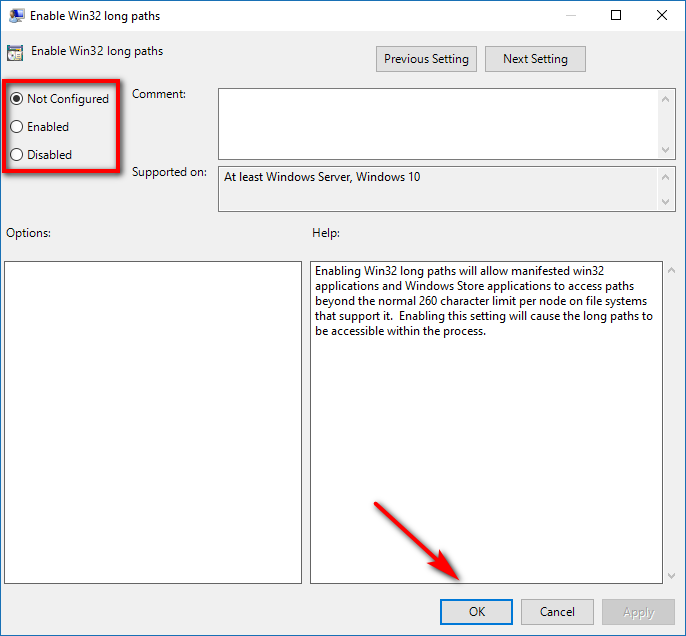The Windows operating system has a common structure for its local paths which is the following: drive letter, colon, backslash, name components with backslashes separating them, followed by a terminating null character.
The maximum path length granted in a Windows operating system is 260 characters.
Windows 10 build 14352 now makes it possible to enable the NTFS long paths. With it, you can then have manifested Win32 applications as well as Windows Store applications to get access to paths that go beyond the typical 260 character limit. If you do enable the Win32 long paths, you’ll make the long paths accessible within the process.
How to Enable or Disable Win32 Long Paths in Windows 10
You can enable or disable the Win32 long paths by using the Local Group Policy Editor in Windows 10. To get started, open the Local Group Policy Editor by pressing the Windows logo key + R to bring up the Run dialog box and then type “gpedit.msc” and hit the “OK” button.
You’ll now have the Local Group Policy Editor open. If you can’t see the window, click on the icon available in the taskbar to bring it up. With it now open, navigate to the Computer Configuration\Administrative Templates\System\Filesystem path.
Click on the “Enable Win32 long paths” just once in the right side pane to highlight it and then click on the “Edit policy setting” link from the middle column.
It’s set to be not configured by default which means that is will be disabled for now unless Windows chooses to have it enabled in the future. Change it over to “Enabled” if you want to enable the setting or “Disabled” if you always want to have it disabled regardless of what Windows does in the future, and then confirm your choice by clicking on the “OK” button at the bottom of the Enable Win32 long paths window.
Even with this option to turn on longer paths, there are some applications that use the Explorer user interface that do not support longer paths. It’s possible Microsoft updates File Explorer in the future to handle the longer paths.
You might also be interested in:
- How to Turn On or Off OneDrive Files On-Demand in Windows 10
- Fix: Ctrl Key + Mouse Click Not Selecting Multiple Items in Windows 10
- How to Disable/Enable Secure Boot on Windows 10 PCs
- Microsoft Removes Homegroups from Windows 10 in Coming Redstone 4 Update
You can subscribe to our RSS, follow us on Twitter or like our Facebook page to keep on consuming more tech.


